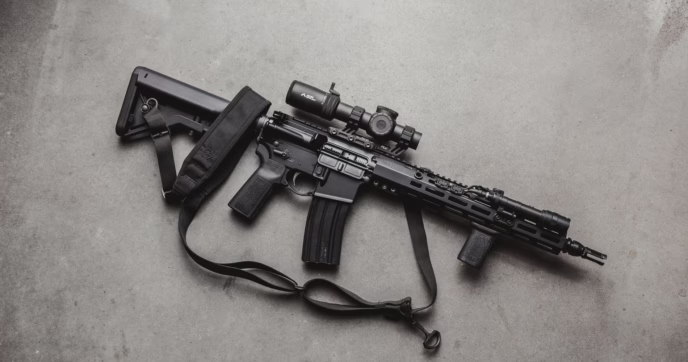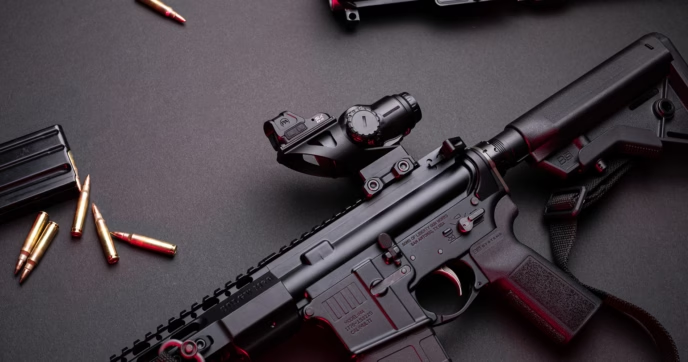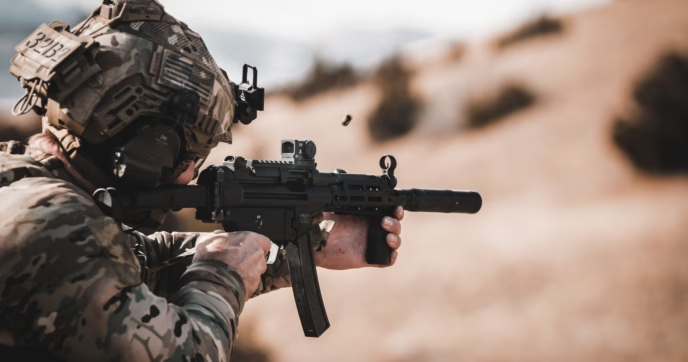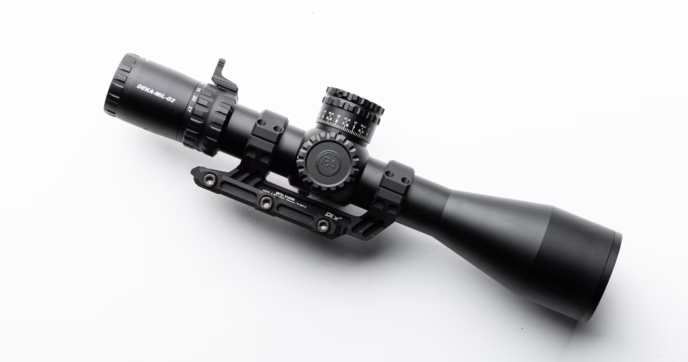Rimfire rifles are all about making things smaller. The guns, the ammo, and if you’re interested in precision, that means your groups as well. Despite their simple design, rimfire rifles are capable of impressive accuracy, provided they are set up correctly.
Whether you’re working with an old bolt-action or a fully customized Ruger 10/22, one of the most effective ways to maximize the performance of a rimfire rifle is by selecting the right optic. With the proper optic, a shooter can tighten their groups, extend their effective range, and gain greater confidence behind the trigger.
Below, we’ll take a look at how optics enhance accuracy, examine the different types of optics available for rimfire platforms, and review some of the additional upgrades that work hand in hand with optics to bring out the best possible performance.
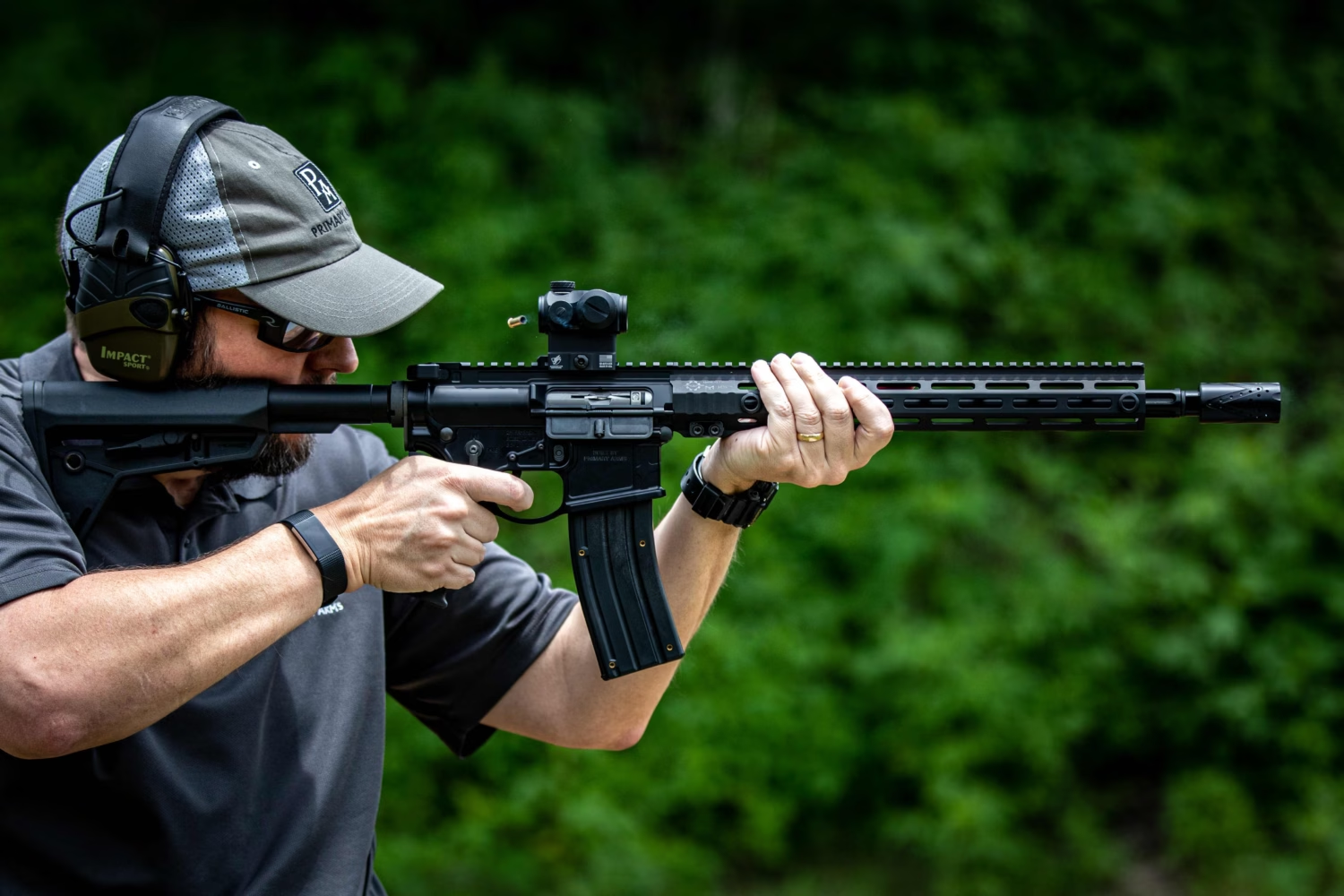
How Optics Enhance Accuracy
The use of an optic changes the way a shooter engages a target. Traditional iron sights require precise alignment between the front post and rear notch, which leaves room for error and can become challenging under stress or in less-than-ideal lighting. An optic simplifies this process by providing a single point of focus, typically in the form of a red dot or reticle, which overlays the target. By reducing the number of elements the eye must align, an optic helps users make more consistent and precise shots.
Certain optics also offer magnification, which improves a marksman’s ability to clearly see a target at greater distances. Even moderate levels of magnification make it easier to identify aiming points, track bullet impacts, and correct for error more precisely.
Many optics incorporate reticle designs that provide additional reference points for elevation and windage, further reducing guesswork and allowing for more confident adjustments. Reticles range in complexity from simple duplex designs that consist of nothing more than two crossed lines to sophisticated grid-style versions with precise measurements, ranging tools, wind holds, and more.
A quality optic also transmits light efficiently, which makes it easier to shoot accurately in dim or fading light while reducing eye fatigue during extended range sessions. Together, these benefits lead to noticeable improvements in accuracy, tighter groupings, and faster, more consistent follow-up shots.
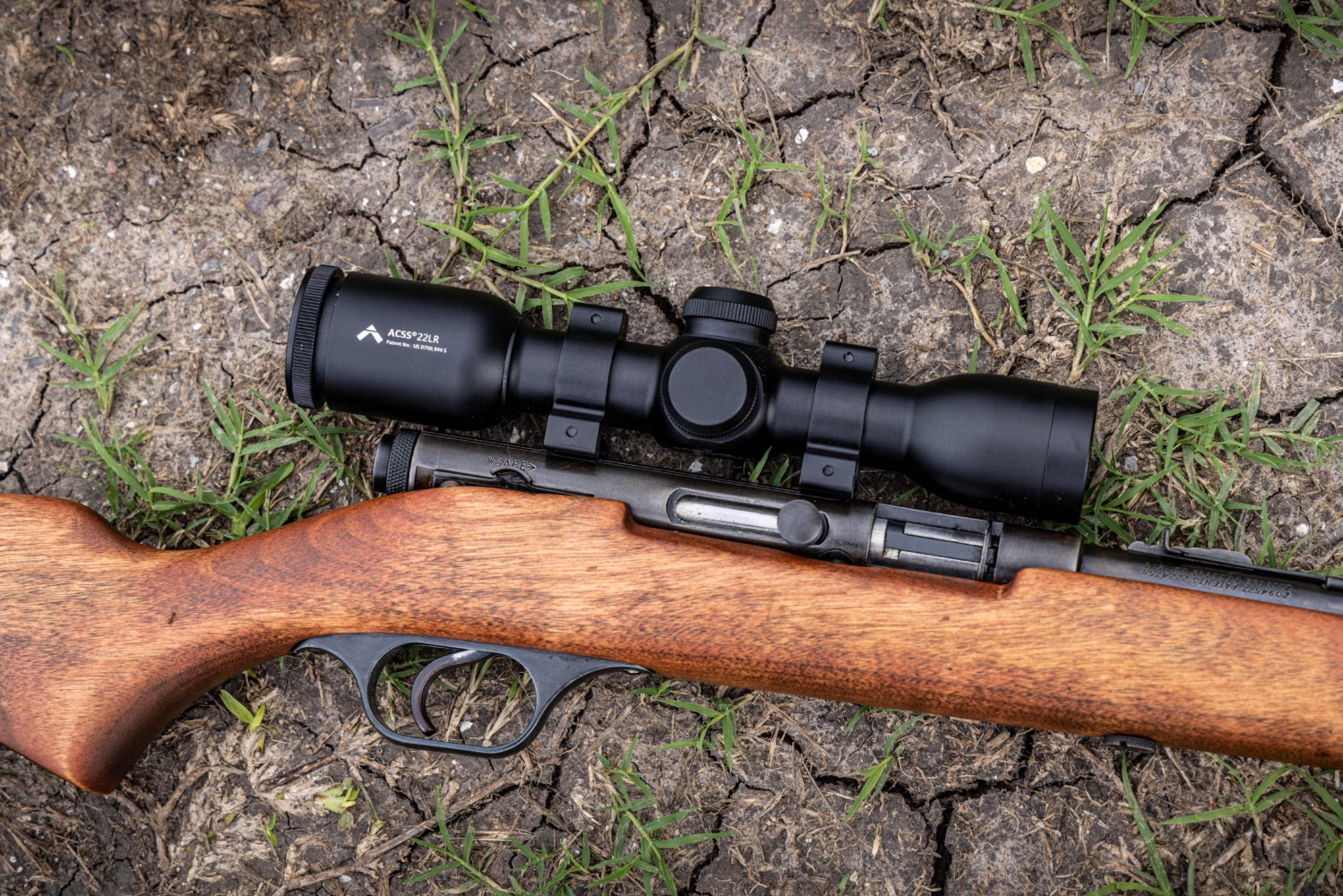
Rimfire Optic Options
Rimfire rifles can be paired with a variety of optics, each offering specific benefits depending on the application.
Red dot sights are among the simplest and most popular choices. They provide a bright aiming point that allows the user to keep both eyes open, enhancing speed and situational awareness. While they do not offer magnification (although they can be paired with a magnifier), they excel in close-range shooting and make target acquisition exceptionally simple. For plinking or fast-paced rimfire competitions such as Steel Challenge, a red dot is an excellent option.
Prism optics represent a middle ground between red dots and traditional scopes. Unlike red dots, a prism scope provides fixed magnification, ranging from 1x to 6x, often in a compact form factor compared to traditional scopes. Their etched reticles remain visible even when batteries fail, and the optical clarity can enhance a shooter’s ability to place accurate shots beyond very short ranges.
Etched reticles also offer the possibility of greater sophistication than red dots are capable of. Red dots are typically limited to no more than a few aiming points, which cannot be too close or too large, or they will bleed into each other. Prisms, on the other hand, can offer ranging ladders, ballistic drop grips, and other reticle options typically reserved for scopes.
For those who want a balance of speed and precision without the bulk of a large scope, prism optics are a compelling choice.
Naturally, scopes remain the most effective option for maximizing rimfire accuracy. Even a modestly powered scope, such as a 2-7x or 3-9x, allows shooters to engage smaller targets at longer rimfire distances with much less difficulty. For small game hunting or target practice where precision is paramount, a scope provides the clearest path to success.
Those looking to wring the absolute limit of precision from their rimfire rifle will typically select a very high-powered rifle scope, often one with a maximum magnification of 36x or greater. This allows for an extremely detailed view of the target and minutely precise aiming point—rather than simply aiming at the bullseye, you can aim at the precise center of it.
Precision rimfire marksmen also prioritize the finest possible adjustments, making MOA scopes more popular than MOA for this purpose, as the common ¼ MOA adjustments found in those scopes are finer than .1 MIL adjustments. Some scopes even offer ultra-precise 1/8th MOA adjustments. This extends to the reticle as well—the more accurately you are able to measure the distance between your point of aim and your point of impact, the more precisely you can correct for any discrepancy.
With proper magnification and a reliable reticle, a rimfire rifle paired with a scope can achieve exceptional levels of accuracy.
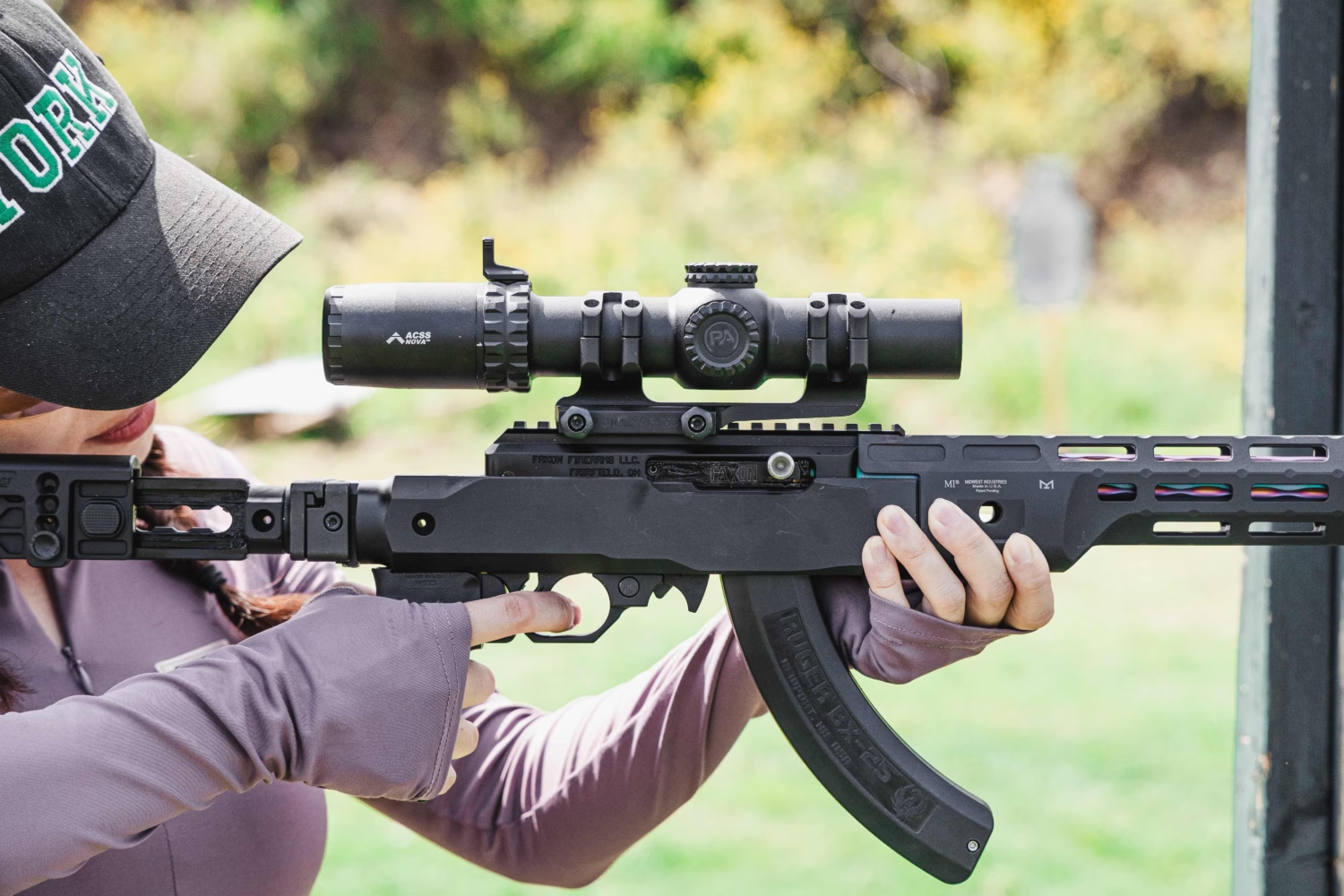
Other Factors in Accuracy
While your optic plays a large role in the practical accuracy of your rifle, it’s not the only factor, nor does it have any impact on mechanical accuracy. If you’re not entirely sure of the difference, we offer a detailed explanation in our article on practical vs mechanical accuracy.
Other upgrades that can make a sizable impact on your group size include your rifle’s trigger, barrel, stock, and ammunition.
Trigger
As with an optic, a trigger doesn’t have any direct effect on mechanical accuracy. Instead, it improves your groups by making it easier for you, the user, to operate your rifle. A trigger that is lighter, smoother, or has a shorter pull is going to help reduce the chances of you moving the rifle during the process of pressing it, which is often one of the most common causes of imprecise groups.
While training can go a long way toward improving your trigger pull, the vast majority of marksmen will be more accurate with a match-grade trigger than with a basic, unimproved version. Still, the baseline you are comparing against will matter here. The stock trigger in a Ruger Precision Rimfire rifle is going to be an awful lot better than a basic 10/22 trigger, so you won’t see as much benefit from upgrading the former as the latter.
Barrel
Here, we get into upgrades that actually operate on the mechanical accuracy of your rifle. Your barrel is arguably the single largest factor in your mechanical accuracy, and so it should be no surprise that investing in it can yield dividends.
Barrel quality directly relates to group size. A higher-quality .22LR barrel can often provide tighter tolerances and more precise machining, even on a microscopic level. This translates into more consistent ballistics with less variation from shot to shot.
Match-grade barrels are also frequently designed with rigidity in mind. That may take the form of a bull-barrel profile or something lighter, such as carbon fiber construction, but in either case, that rigidity helps to reduce vibrations in the barrel that cause minuscule changes in where it is pointed from shot to shot, even if your crosshairs remain in the same place.
This phenomenon is often called barrel whip when it happens in a more pronounced way, and in certain rifles and calibers, can result in a group several MOA larger than would be achieved with a more rigid barrel. The lesser energy they produce means this is seldom the case for rimfire rifles, but the same phenomenon can still have a noticeable impact on your groups.
Stock or Chassis
Certain upgrades work on both practical and mechanical accuracy. This is the case with stocks and chassis, both of which serve the same function—housing the action of your rifle.
An upgraded stock or chassis improves accuracy by the same mechanism we just discussed with barrels: rigidity. A more rigid stock will flex less under the forces of recoil or when loading a bipod or pressed against a rest.
Stocks can also offer free floating barrels, which can help to isolate the barrel from external factors that could influence it. Many rimfire rifles come with free-floating barrels from the factory, but if yours does not, opting for a stock that allows the barrel to avoid contact with the handguard can sometimes improve your groups.
A classic example is the Ruger 10/22, which, in its basic and most common configuration, does not have a free-floating barrel. However, models with free-floating barrels are available, and a prodigious aftermarket means that there are plenty of upgraded stocks to choose from. A 10/22 chassis can go even farther, not only free-floating the barrel of your rifle by allowing for greater customization of the stock, grip, and handguard.
Lastly, a stock or chassis can boost your practical accuracy by upgrading the ergonomics of your rifle to help you hold it more steadily. Things like adjustable cheek rests can help you achieve a more consistent head position, while a contoured stock with a hooked surface built in may help you pull it more securely into your shoulder pocket.
Ammunition
Often one of the most overlooked facets of accuracy, the difference that match-grade ammunition can make in your group sizes is simply massive when it comes to rimfire rifles. Much, if not most, rimfire ammunition is manufactured as cheaply as possible in order to provide customers with the best value and lowest cost per shot. Your average .22 rarely gets used for anything more demanding than plinking cans or targets at fifty yards, and so accuracy is generally secondary to cost.
High-quality, precise ammunition is loaded with consistency in mind. The variables in this type of ammunition are much more tightly controlled during the manufacturing process, resulting in a much smaller standard deviation in shot velocity. While variations in velocity won’t matter much at 25 yards, the farther away you get, the more noticeable they become.
Each of these factors plays into the overall accuracy of your rifle. When these upgrades are combined with a well-chosen optic, the result is a rifle system that consistently delivers superior accuracy and inspires confidence in every shot.
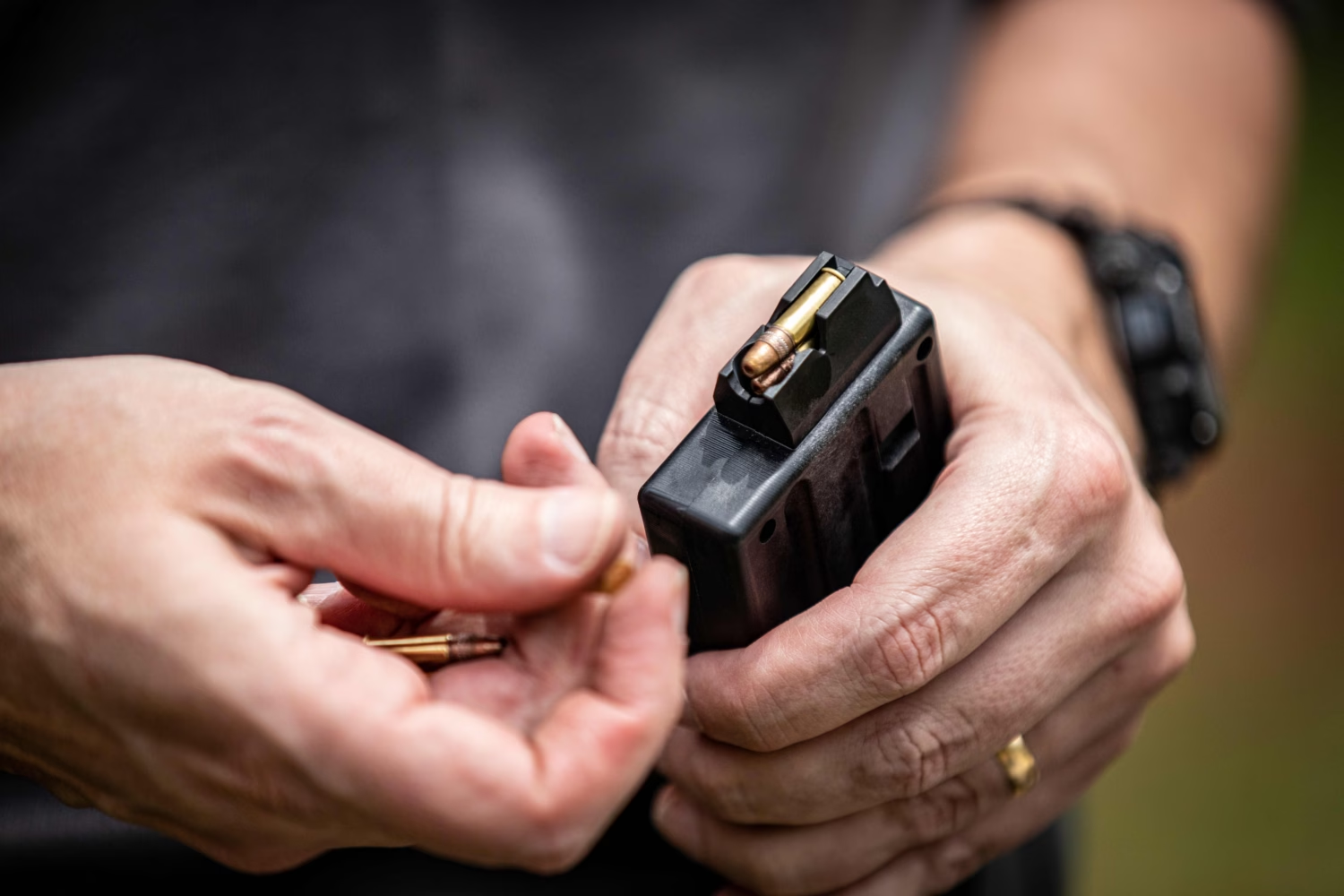
Conclusion
Rimfire rifles are an outstanding platform for both experienced users and budding marksmen, offering an affordable way to build skills and enjoy precision shooting. To unlock their full potential, however, they must be paired with the right equipment. Optics play the most significant role in enhancing accuracy by simplifying the aiming process, providing clearer sight pictures, and extending the shooter’s effective range. Whether a red dot, prism optic, or scope, each option brings meaningful improvements suited to different styles of shooting.
Complementary upgrades such as improved triggers, better barrels, quality stocks, and carefully selected ammunition further amplify the benefits of an optic. Together, these elements transform a standard rimfire rifle into a highly capable precision tool. By investing wisely in the right optic and supporting upgrades, shooters can experience tighter groups, greater consistency, and a more rewarding time at the range or in the field.
